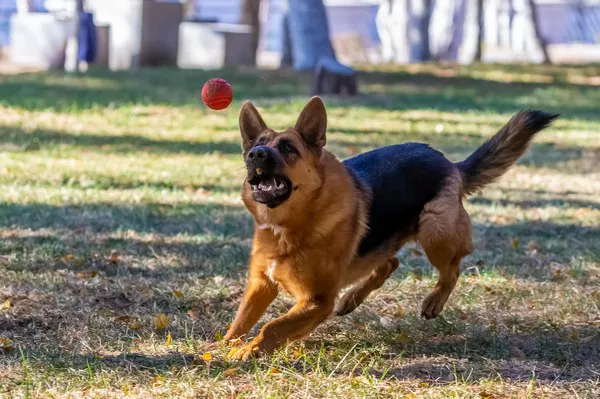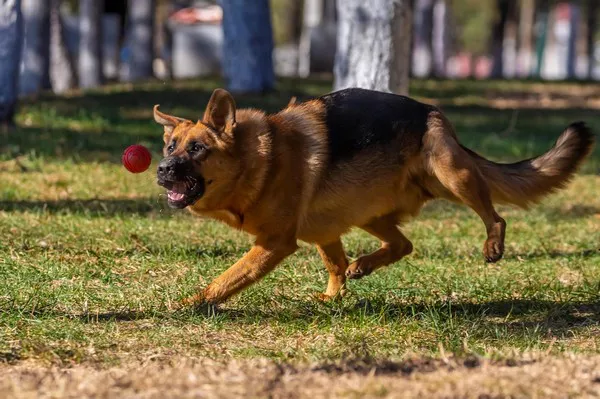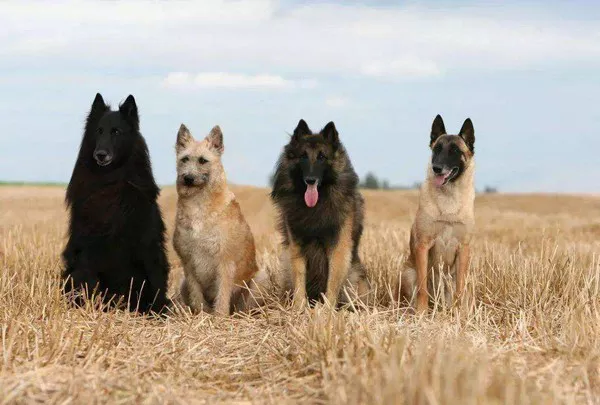The Alaskan Klee Kai is often described as a miniature version of the Siberian Husky, but is this an accurate comparison? While the Alaskan Klee Kai does share some physical traits and temperament characteristics with the Siberian Husky, it is, in fact, a distinct breed with its own unique history, traits, and care requirements. To understand whether the Alaskan Klee Kai can be called a mini husky, it’s essential to examine the breed from various angles, including its origin, appearance, temperament, health, and care needs.
History of the Alaskan Klee Kai
The Alaskan Klee Kai’s history begins in the early 1990s, when a breeder named Linda Spurlin in Alaska sought to create a small dog that resembled the iconic Siberian Husky but was better suited for people living in smaller spaces and urban environments. She wanted a dog with the striking looks of a husky but without the high energy levels and size that come with the breed. To create the Alaskan Klee Kai, Spurlin crossed the Siberian Husky with smaller breeds, including the American Eskimo Dog and the Schipperke.
The goal of these crossbreeds was to retain the striking features of the Siberian Husky but to reduce the size to make the dog more manageable for everyday living, particularly in apartments or smaller homes. The Alaskan Klee Kai was officially recognized by the American Kennel Club (AKC) in 1997, and it has since gained popularity due to its small size, beautiful coat, and friendly demeanor.
Size and Appearance
One of the first things that people notice about the Alaskan Klee Kai is its appearance, which does indeed resemble that of the Siberian Husky. However, despite the similarities, there are several distinct differences between the two breeds.
Size: The Alaskan Klee Kai is much smaller than the Siberian Husky. The Klee Kai comes in three size categories: toy, miniature, and standard. The standard size typically stands between 15 and 17 inches tall at the shoulder and weighs between 16 to 23 pounds. The miniature variety is smaller, standing between 13 and 15 inches and weighing 10 to 15 pounds, while the toy variety is even smaller, measuring 13 inches or less and weighing between 7 to 10 pounds. In contrast, the Siberian Husky is significantly larger, standing at about 20 to 24 inches tall at the shoulder and weighing 35 to 60 pounds.
Coat: Like the Siberian Husky, the Alaskan Klee Kai has a double coat, which provides insulation in cold weather. Its outer coat is dense and thick, and it typically comes in a range of colors, including black, gray, red, and white. The coat can be long or short, depending on the variety. The undercoat is soft and woolly, providing warmth. Despite the thick coat, the Alaskan Klee Kai is not as hardy in extremely cold weather as a full-size Husky, so extra care must be taken when keeping them in cold climates.
Eyes: One of the most striking features of both breeds is their eyes. Alaskan Klee Kais typically have almond-shaped eyes that are bright and expressive, often blue, brown, or a combination of both. The Husky is known for its striking blue eyes, but they can also have brown or even heterochromia (two different colored eyes). The Klee Kai’s eyes, like the Husky’s, can appear to be very intelligent and alert, giving them an almost wolf-like look.
Facial Mask: Another characteristic that the Alaskan Klee Kai shares with the Siberian Husky is the facial mask. The Klee Kai has a well-defined face with markings around the eyes and forehead, similar to the Husky’s “mask.” This contributes to its wolf-like appearance, and this feature is one of the reasons people often mistakenly think of the Alaskan Klee Kai as a “mini husky.”
Temperament
Although the Alaskan Klee Kai and the Siberian Husky share a similar appearance, their temperaments can differ significantly.
Alaskan Klee Kai Personality: The Alaskan Klee Kai is known for its playful and intelligent personality. It is typically reserved and cautious around strangers, which makes it a good watchdog. However, it forms strong bonds with its family and is affectionate and loyal to its owners. Klee Kais tend to be more reserved and independent than the Husky, which can make them somewhat harder to train. They can be a bit stubborn and need an experienced owner who can provide firm but positive training. They are also known to be quieter than Huskies, as they tend to not bark as much, although they are quite vocal in other ways, such as whining or howling.
Siberian Husky Personality: The Siberian Husky, on the other hand, is generally outgoing, friendly, and energetic. Huskies are often described as “people dogs,” meaning they love being around people and tend to get along well with strangers and other animals. They are known for their friendly demeanor and their social nature, but they can also be independent and sometimes stubborn, which can make training a challenge. Huskies have a strong prey drive, so they may chase small animals. They are also quite vocal, known for their distinctive howls and barks.
Socialization: Both the Alaskan Klee Kai and the Siberian Husky benefit from early socialization, but the Klee Kai may require extra attention in this area, especially since they can be more cautious and wary of strangers. Early exposure to various people, places, and situations will help the Klee Kai grow into a well-rounded dog. The Siberian Husky, being more naturally outgoing, usually requires less effort to socialize but still needs proper training and guidance.
Exercise Needs
Both the Alaskan Klee Kai and the Siberian Husky are active dogs, but the energy levels of the Klee Kai are lower than those of the Husky.
Alaskan Klee Kai Exercise Needs: While the Alaskan Klee Kai is an active breed that requires daily exercise to maintain health and avoid boredom, its energy levels are more manageable than those of the Siberian Husky. Typically, an hour or so of exercise a day—such as walks, play sessions, and some time off-leash (in a safe, secure area)—should be sufficient for the Klee Kai. They enjoy mental stimulation, so puzzle toys, agility training, and obedience training can also be beneficial.
Siberian Husky Exercise Needs: The Siberian Husky is a working dog that was bred for pulling sleds over long distances in harsh conditions. As a result, the Husky has very high energy levels and requires much more exercise than the Klee Kai. A typical Husky needs at least 1.5 to 2 hours of exercise per day, with the ability to run freely and engage in activities that challenge their stamina. Without adequate exercise, Huskies can become bored and destructive, so it is essential for Husky owners to have the time and space to meet these needs.
Training and Intelligence
Training the Alaskan Klee Kai: Alaskan Klee Kais are highly intelligent, but they can also be independent and stubborn, which can make training more challenging. They respond best to positive reinforcement techniques and enjoy activities that involve mental stimulation. While they are more reserved than Huskies, they can be very loyal and loving toward their families. Consistency and patience are key when training an Alaskan Klee Kai.
Training the Siberian Husky: Siberian Huskies are also intelligent, but they are known for being more independent and sometimes willful, which can make training difficult. They are not as eager to please as some other breeds, so training them requires patience and persistence. Huskies benefit from early obedience training and socialization, and they do well when engaged in activities that allow them to use their energy and intelligence, such as agility courses or pulling activities.
Health Concerns
Both breeds are generally healthy, but there are certain health issues that owners should be aware of.
Alaskan Klee Kai Health: The Alaskan Klee Kai is a generally healthy breed, but like all dogs, they can be prone to certain genetic health problems. These can include eye issues, such as cataracts or progressive retinal atrophy (PRA), as well as patellar luxation (a condition where the kneecap slips out of place). Regular checkups with a veterinarian can help identify and address these issues early on.
Siberian Husky Health: The Siberian Husky is also a relatively healthy breed, but they are prone to certain conditions, including hip dysplasia, eye problems (such as cataracts and corneal dystrophy), and hypothyroidism. Like the Klee Kai, regular veterinary visits and maintaining a healthy diet and exercise routine are crucial for preventing or managing these issues.
Grooming
Both the Alaskan Klee Kai and the Siberian Husky have double coats that shed heavily, particularly during shedding seasons. This means that grooming is an important part of caring for these breeds.
Alaskan Klee Kai Grooming: The Alaskan Klee Kai’s coat requires regular grooming to prevent matting and to manage shedding. Brushing once or twice a week is typically sufficient, but more frequent grooming may be necessary during shedding periods. Regular ear cleaning and nail trimming should also be part of the grooming routine.
Siberian Husky Grooming: The Siberian Husky requires more frequent grooming, especially during shedding seasons (typically twice a year). Brushing several times a week is necessary to prevent mats and tangles and to manage the shedding. Huskies also benefit from regular ear checks and nail trims to maintain overall health.
Conclusion
While the Alaskan Klee Kai does resemble the Siberian Husky in many ways, it is not simply a miniature version of the Husky. The Klee Kai is a distinct breed with its own history, characteristics, and care requirements. While both breeds share a similar appearance and some behavioral traits, the Klee Kai is smaller, quieter, and often more reserved than the Husky. It is important for potential pet owners to understand these differences when choosing a breed, as the needs and temperament of each breed vary considerably.
If you’re considering adding an Alaskan Klee Kai to your family, be prepared to provide plenty of exercise, mental stimulation, and love. With the right care and training, this intelligent and affectionate breed can make a wonderful companion, offering all the beauty of the Husky in a smaller, more manageable package.
Related Topics:




















